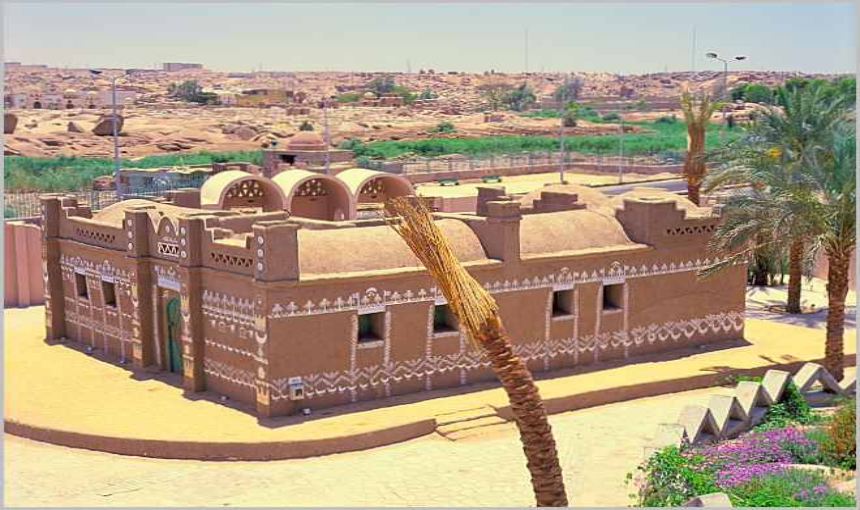Exploring Nubia and the Nubian Civilization: A Rich Tapestry of History and Culture
The Nubian civilization, often overshadowed by its illustrious neighbor Egypt, is a treasure trove of history, culture, and remarkable achievements. Located in the region that now encompasses southern Egypt and northern Sudan, Nubia was home to some of Africa’s earliest kingdoms. It played a pivotal role in shaping the cultural and political landscape of ancient Northeast Africa. This article delves into the fascinating history of Nubia, its civilization, and its enduring legacy.
Geographical Context and Early History
Nubia, also known as the land of Kush, stretches along the Nile River from Aswan in southern Egypt to Khartoum in Sudan. This strategic location made it a bridge between sub-Saharan Africa and the Mediterranean world. It fostered trade, cultural exchange, and political alliances. The Nubian civilization began to flourish around 3500 BCE, predating many other ancient civilizations.
The early Nubians were skilled farmers, potters, and metalworkers. They harnessed the Nile’s floodwaters to cultivate crops and developed advanced irrigation techniques. This agricultural surplus allowed the Nubians to establish permanent settlements and complex societies.
The Kingdom of Kerma
One of the earliest and most significant Nubian kingdoms was Kerma. It thrived between 2500 BCE and 1500 BCE. Kerma was a powerful and wealthy state, known for its monumental architecture. This included large mud-brick buildings and elaborate royal tombs. The city of Kerma, the kingdom’s capital, was a bustling urban center with vibrant trade networks extending into Egypt and beyond.
Kerma’s society was hierarchical, with a king at the apex, supported by a class of nobles, priests, and administrators. The Kerma culture was distinct yet influenced by its interactions with Egypt, evident in its art, religion, and burial practices.
Check the Best Nile Cruises:
- Standard 5 Stars Nile Cruise.
- Deluxe 5 Stars Nile Cruise.
- Luxury 5 Stars Nile Cruise.
- Ultra Luxury 5 Stars Nile Cruise.
- Lake Nasser Nile Cruise.
- Dahabyia Nile Cruise.
- Felucca Adventure Nile Cruise.
- Cairo Dinner Cruise.
The Rise of the Kushite Kingdoms
Around 1500 BCE, the Egyptian New Kingdom expanded into Nubia, establishing control over the region. They integrated it into their empire. This period of Egyptian domination lasted until about 1070 BCE when the Egyptian influence waned. Local Nubian leaders began to reassert their independence.
By the 8th century BCE, Nubia had risen again under the powerful Kingdom of Kush. Its capital was at Napata. The Kushites adopted many aspects of Egyptian culture, including their gods, writing system, and monumental architecture. In a remarkable reversal of fortunes, the Kushite kings, known as the “Black Pharaohs,” conquered Egypt and established the 25th Dynasty. They ruled as pharaohs for nearly a century.
Meroë: A Center of Culture and Trade
After the decline of the 25th Dynasty, the Kushite capital moved to Meroë around 590 BCE. Meroë became a major center of iron production, trade, and culture. The city’s strategic location near iron ore deposits and trade routes contributed to its prosperity. Meroitic ironwork was renowned for its quality and played a crucial role in the kingdom’s economy.
Meroë’s society was diverse and cosmopolitan. It had influences from Egypt, Greece, Rome, and sub-Saharan Africa. The Meroitic script, a unique writing system developed during this period, remains only partially deciphered. This adds an element of mystery to the civilization.
Religion and Art in Nubian Civilization
Religion was a central aspect of Nubian life, deeply intertwined with politics and daily practices. The Nubians worshipped a pantheon of gods, many of whom were shared with the Egyptians. Amun, the chief deity, held a prominent place in both Egyptian and Nubian religious life. The temple of Amun at Jebel Barkal, a sacred site in Nubia, became a major religious center.
Nubian art and architecture reflect a blend of indigenous and Egyptian influences. The construction of pyramids, although smaller and steeper than their Egyptian counterparts, was a notable feature of Nubian architecture. These pyramids, located at sites like Nuri and Meroë, served as royal tombs and reflected the Nubians’ beliefs in the afterlife.
Nubia’s Decline and Legacy
The Kingdom of Kush began to decline around the 4th century CE due to a combination of internal strife, environmental changes, and pressure from external forces such as the Kingdom of Axum. Despite its decline, the legacy of Nubian civilization endured.
Modern Nubians, descendants of this ancient civilization, continue to live in the region. They preserve their unique cultural heritage. Archaeological discoveries in Nubia have shed light on the rich history of this civilization. This has contributed to a broader understanding of Africa’s ancient past.
The Nubian civilization is a testament to the resilience, ingenuity, and cultural richness of the peoples who inhabited the Nile Valley. From the early days of Kerma to the grandeur of the Kushite kingdom and the industriousness of Meroë, Nubia’s history is a tapestry of achievements and influences that shaped the course of African and world history. As we continue to uncover the secrets of this ancient civilization, we gain a deeper appreciation for its contributions to human heritage.
Follow us on Facebook, Instagram, Pinterest and X.
Don't miss checking our other Egypt Nile Cruises




